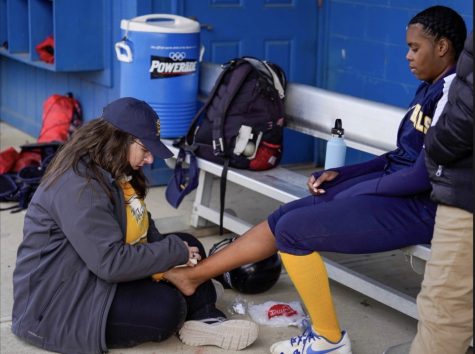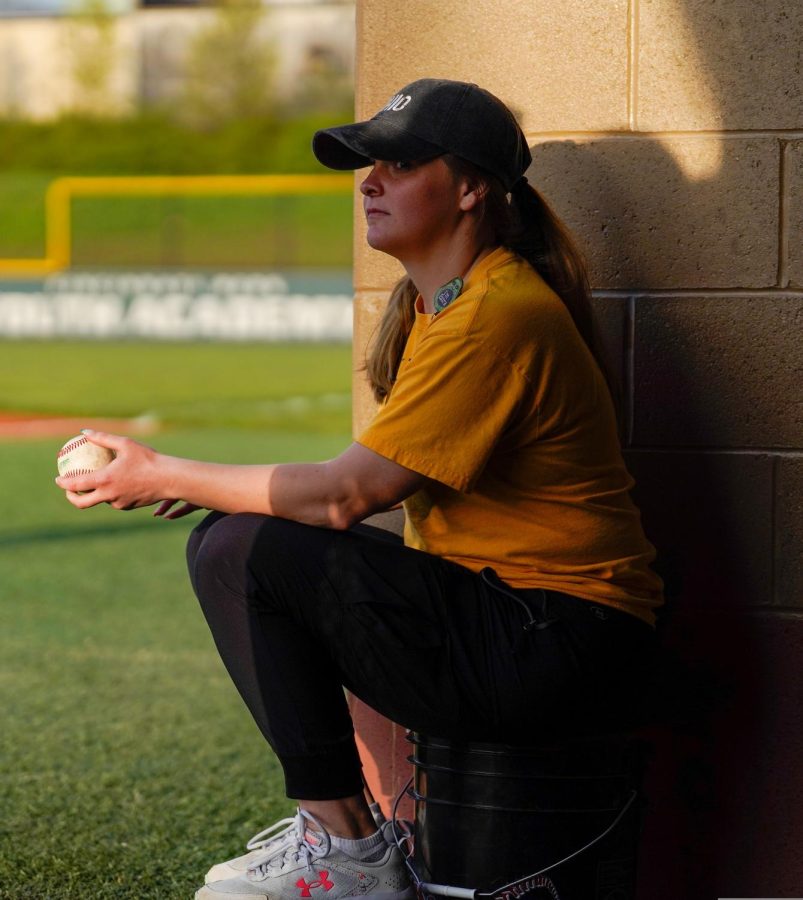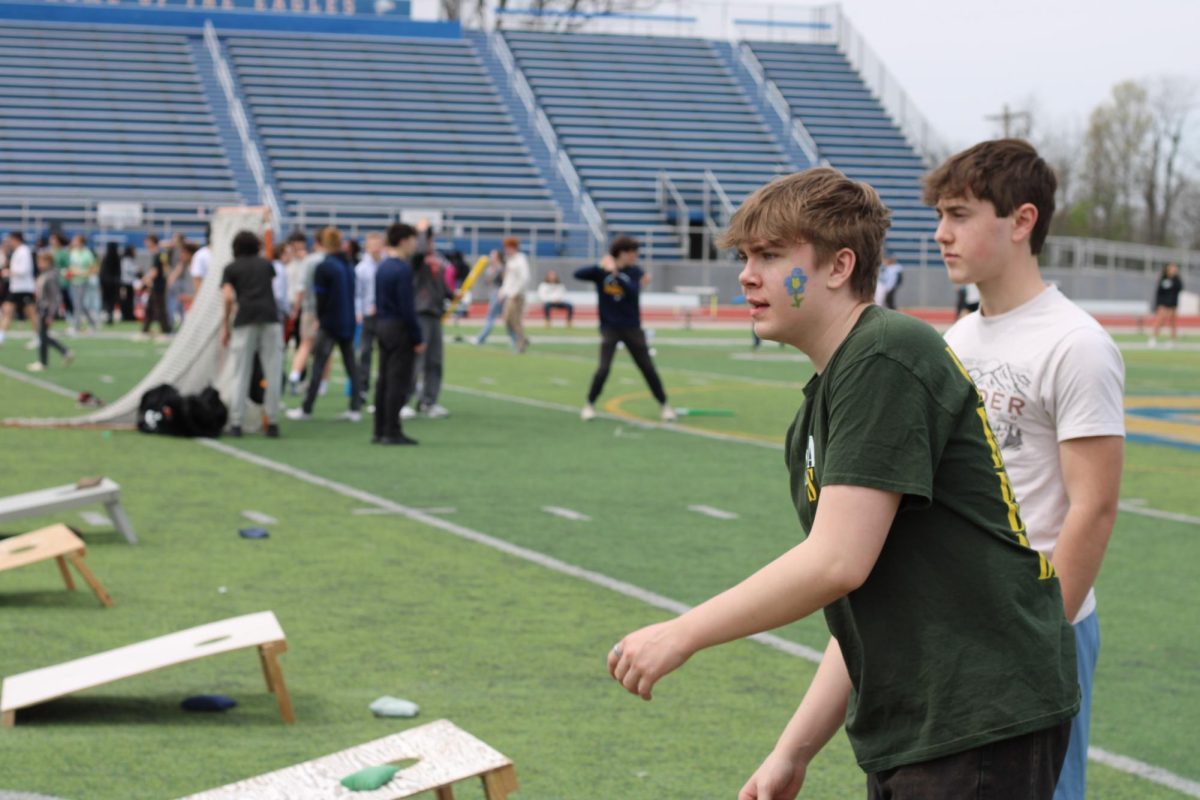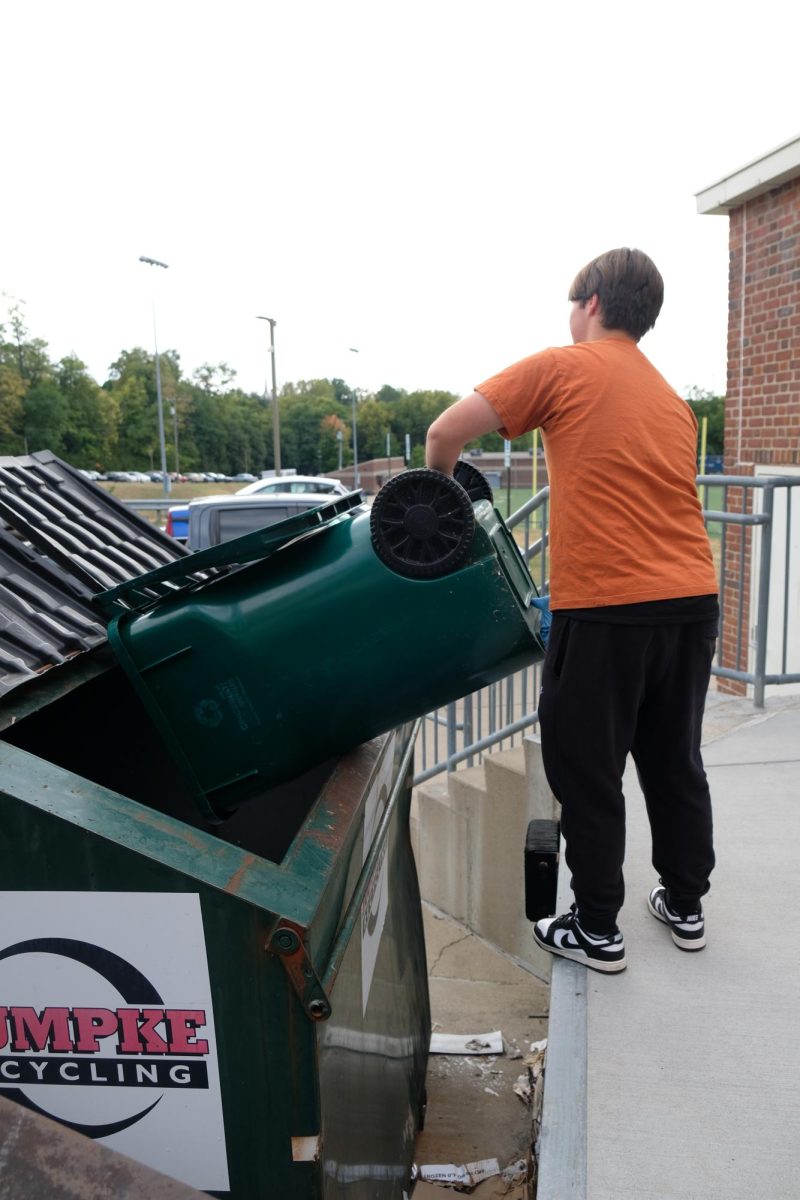Playing through the pain
Used with permission from Madeline Krebs
Krebs is on the sidelines of junior high baseball games in case of any accidents. “I think one of the benefits of being an athletic trainer is that we are here all the time,” Krebs said.
May 8, 2023
For athletes, injuries are seen as an inconvenience that keeps them from being able to play, but they don’t just come in the form of physical impairments. Injuries can also play a big part in athletes’ mental health. This is one of the many factors that parents must address when deciding if they should let their children play sports.
Playing sports at a young age means that athletes have an intensified likelihood of getting injured. Getting injured at a young age, because athletes’ bodies are still developing, can also have long-term effects on the body that can affect playing in the future.
“Junior high is a little bit different because you’re at a higher risk for certain injuries,” athletic trainer Madeline Krebs said. “Growth plate injuries, especially, are way more common in junior high kids than high school kids because their growth plates are not done forming yet.”
Standing by for every junior high sports game, there are athletic trainers to help limit the number of possible injuries.
“We are here on the sidelines at every single game, so if something were to happen, such as the Damar Hamlin situation, during the game, we are here on site to provide that emergency care,” Krebs said.
With worries about injuries, there is one sport that comes up in conversation the most: football. Football is known to be a violent sport and playing it often means that athletes have a higher chance of getting injured compared to other sports.
“That’s definitely our junior high sport that I’ve seen a higher number and higher intensity of injuries,” Krebs said.
Injuries at a young age don’t only leave consequences on the body for the future, but they can also have negative effects on kids’ mental health. Athletes work year-round to perfect their skills, and learning that they are not able to do what they love can be very damaging to hear.
“Whenever an athlete is injured, there is an amount of depression that

(Used with permission from Howard Birl)
sets in because you can no longer do what you’ve been training to do,” junior high football coach, Howard Birl, said.
Getting injured can hurt kids’ self-esteem and make them feel less than adequate in their sport. This feeling can spiral and start affecting their attitude concerning things other than sports.
“We’ve had that conversation a lot more, especially since COVID, as mental health has been pushed to the forefront,” Krebs said. “We’ve had people that we’ve had to refer to sports psychologists because of injuries.”
It is impossible to stop injuries from happening. When athletes sign up for sports, they are also signing up for the potential of getting injured. However, Krebs and Birl agree that WHHS does everything it can to prevent substantial injuries.
“It can be hard when you see the defeat in [athletes] faces if they’re not making progress as quickly as they want to make,” Krebs said. “But that’s just what we do. We’re here and we push every day.”
As one of the three athletic trainers at WHHS, Krebs works with Nathalie Towchik and Karl Quilligan to help prevent injuries and keep kids safe.
“I think my biggest thing would be to encourage all of our athletes to utilize Natalie, Karl, and I because that’s what we’re here for,” Krebs said. “Yes we’re here for after you get injured, but we can give you that preventative care to start doing beforehand to limit your potential [for injury].”







